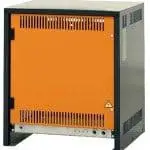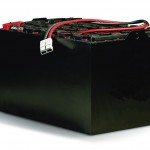Forklift Battery Charger – 10 charging tips for lift truck batteries
10 things to know about charging a forklift battery
-
- Make sure the charger is properly sized (matched) to the battery it is charging. That means:
- The charger outputs the same voltage as the battery. Sounds basic, but not everyone knows that a 24 volt pallet truck charger is designed to charger a 24 volt battery.

Industrial Battery Charger for a Lift Truck Someone might think it is okay to use the charger assigned to the orderpicker to charge the 48 volt sit down forklift. It’s not.
- But how do you know what voltage the forklift battery is?
- Simply count the cells (the little squares on top of the battery) and multiply it by two.
- A 36 volt forklift battery will have 18 cells.
- Now make sure there are different SB connectors for the different voltage chargers so there can be no mistake. Generally, a large red connector goes with 24 volts, a large grey connector goes with 36 volts, large blue with 48 volts. But this is just convention, you can create your own color assignments.
- The charger outputs the same voltage as the battery. Sounds basic, but not everyone knows that a 24 volt pallet truck charger is designed to charger a 24 volt battery.
- Be sure that the ampere hour rating is within 10% of the lift truck battery it is charging.
- How do I know that?
- Find out what the model number is of the forklift’s battery.
- The model number will help you know what the ampere rating of the battery is. The battery’s model number is made up of 3 pieces of information. Cells–Amps per cell–plates, eg 18–125–13.
- To know the number of total amps in a battery, subtract 1 from the number of plates (13-1=12) and divide it by 2 (12/2=6). Now multiply it by the middle number (6x125=750). That is the ampere hour rating of the battery.
- With the amp hour rating of the battery in hand, check the output of the forklift battery charger. It is on the spec plate of the charger – right in front where the model number and serial number are listed. It needs to be within 10% or so.
- Now you have the chargers assigned to the lifts, write the ampere hour rating of the battery on the battery’s connector with a black marker. Do the same with the charger. Now your team will be able to match the numbers to be sure they are connecting the right sized charger to the correctly assigned battery.
- Check that the battery charger cables are not damaged or showing heat damage.

Charged and watered correctly, a forklift battery will last for years. - Heat might be a sign of a mismatched charger or an under-performing battery.
- Cables get run over all the time. It is important to ask your lift truck technician to repair any frayed or damaged cables.
- Be sure to charge your forklift battery after the shift.
- Do not store on a low charge (discharged state). It can cause the battery to sulfate.
- Water your forklift batteries after charging, never before.
- An overfilled battery can spill over the top during charging leaving you with sulfuric acid all over the warehouse floor.
- Water your forklift batteries regularly with distilled or de-ionized water to cover the plates inside the battery cells.
- The plates should be fully submerged with liquid (electrolyte) inside the cells.
- Unsubmerged cells will quickly sulfate (lose their ability to absorb and release energy).
- Keep a watering log.
- This will help you support a warranty claim should you have one during the battery warranty period.
- Be sure to allow your battery to charge fully through the finishing charge – the gassing phase.
- You know your battery is nearing fully charged when gas bubbles start to appear.
- The negative plate produces hydrogen and the positive plate produces oxygen.
- This bubbling process helps mix the acid inside the battery for uniform acidity over all areas of the plate.
- Charge the lift truck battery in a well ventilated place.
- The hydrogen and oxygen can make an explosive combination if they build up in any type of concentration.
- Don’t charge a battery that is too hot or too cold.
- Do not allow a forklift battery to freeze. Do not charge a frozen battery.
- Do not charge the batteries at above 120°F (49°C ). Too hot to touch? Don’t charge the battery.
- Make sure the charger is properly sized (matched) to the battery it is charging. That means:
For more great information on batteries and chargers, a valuable resource for information can be found here: http://batteryuniversity.com

